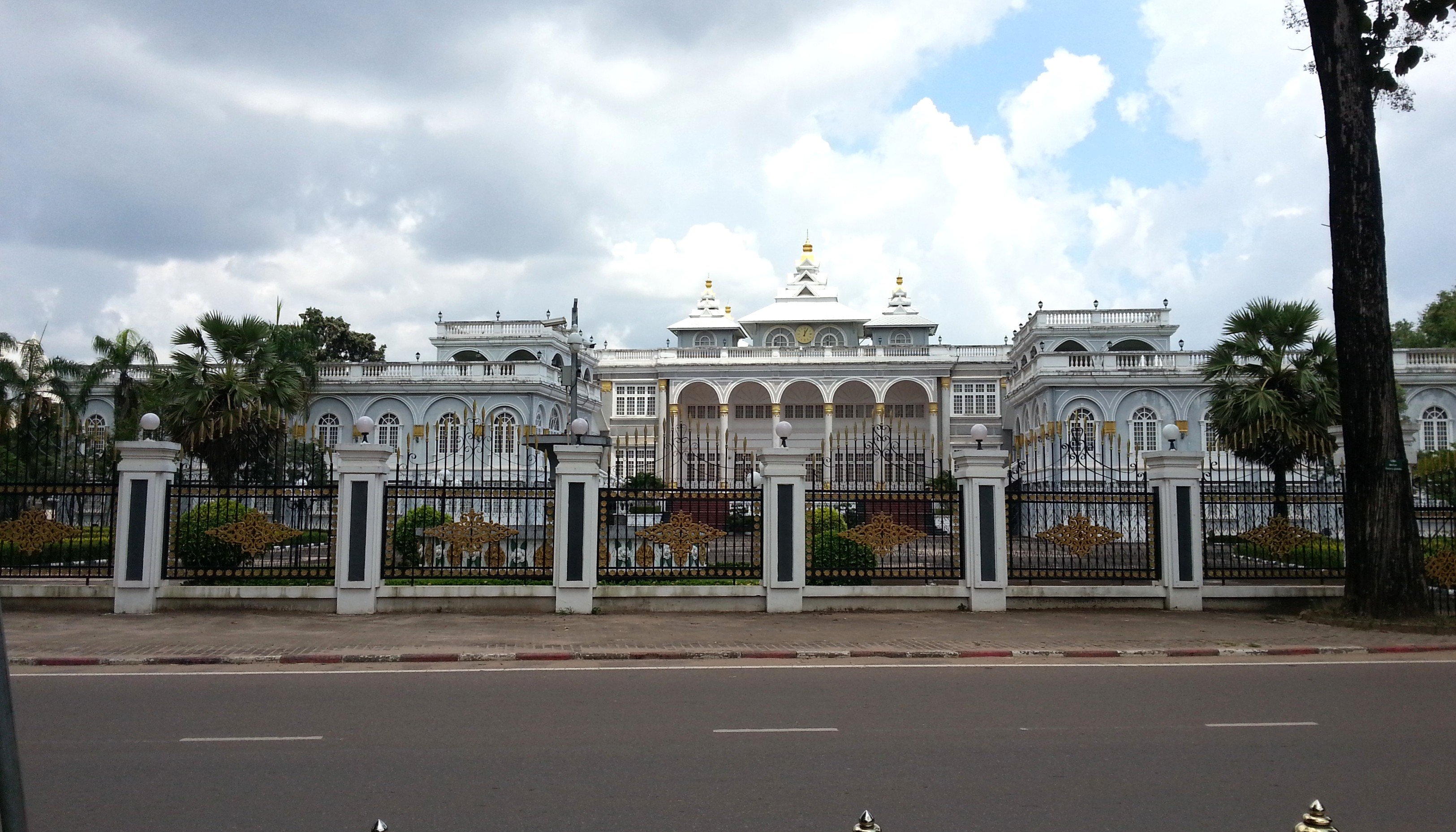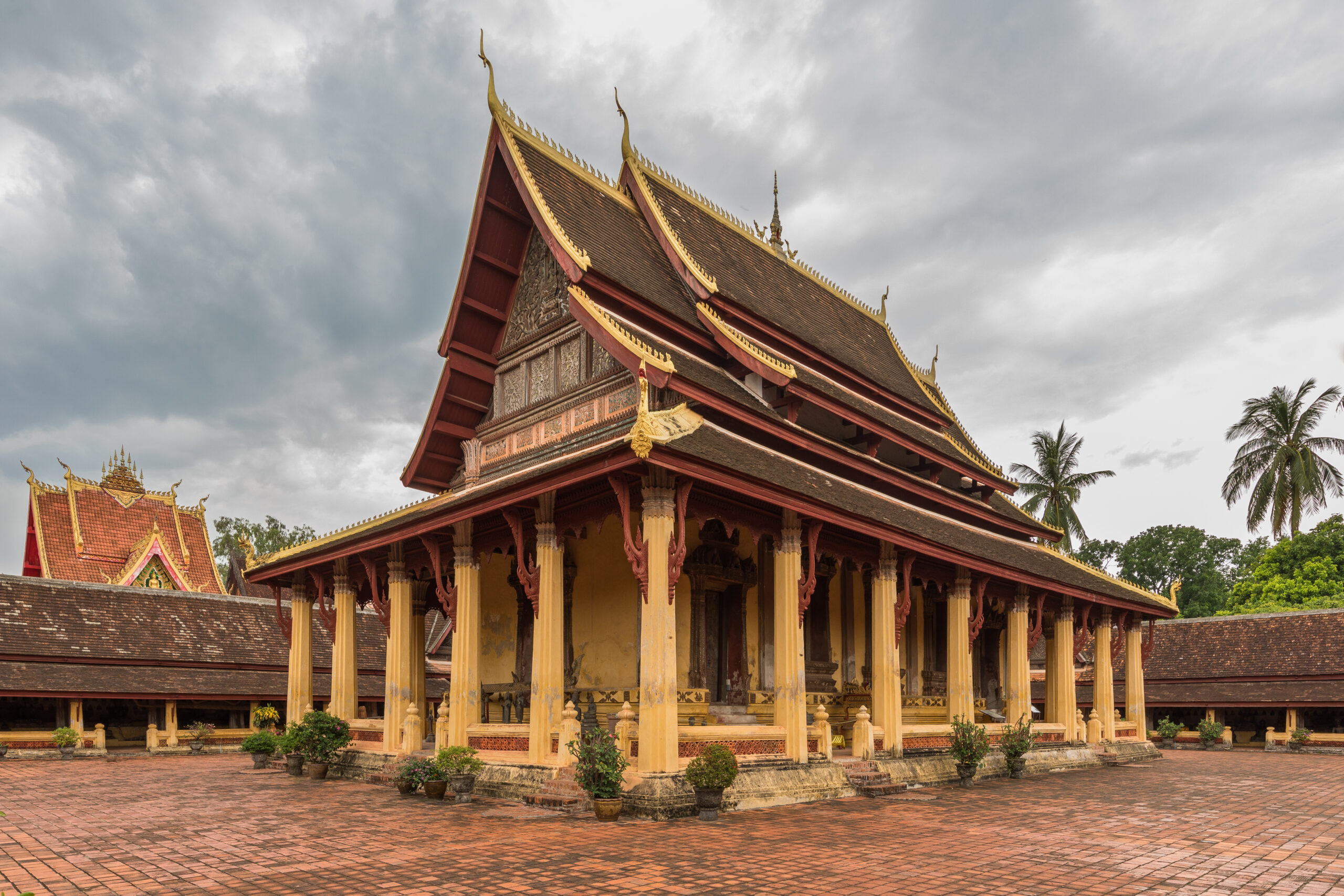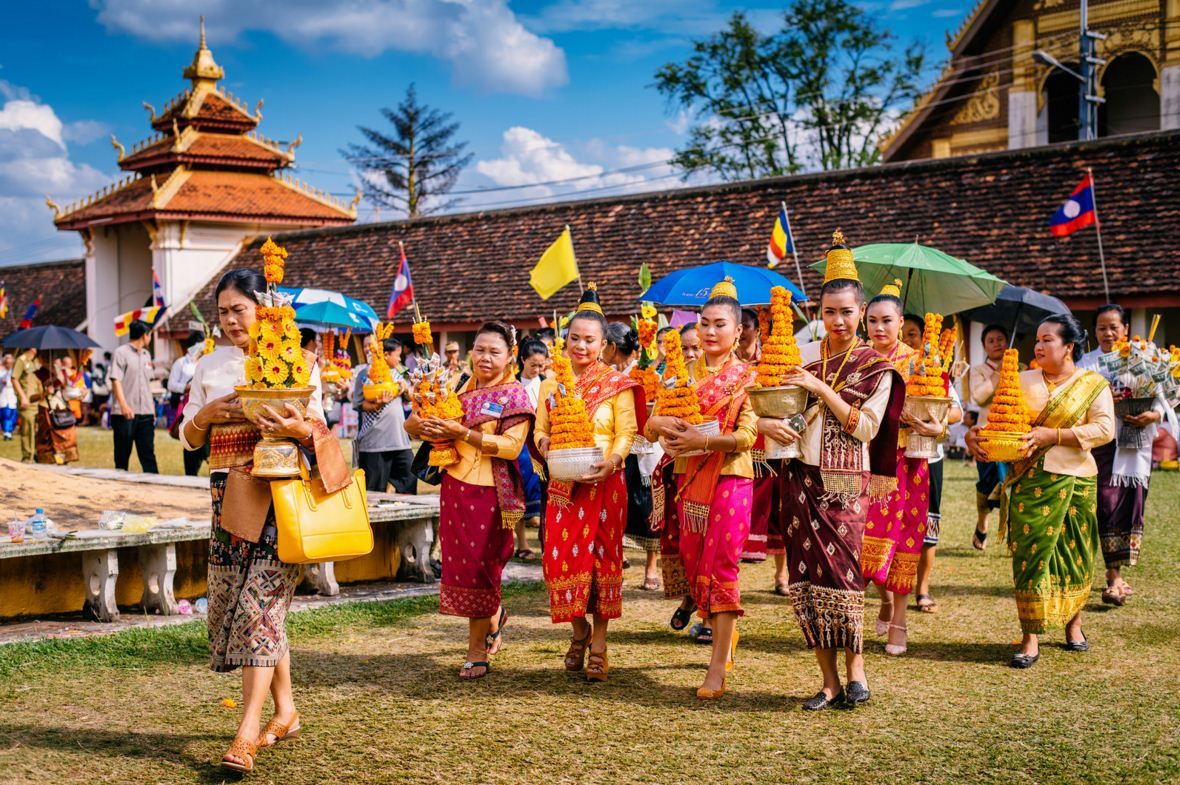1. Overview
The Presidential Palace is one of Vientiane’s most iconic colonial-era landmarks. Though not open to the public, its French-style architecture, manicured grounds, and symbolic value make it a must-see. The building reflects Laos’ transition from monarchy to republic and is centrally located near many cultural attractions.
- French colonial-style ceremonial building
- Symbol of national unity and leadership
- Top photogenic spot in central Vientiane
2. Address
Located in the heart of the city, the palace is easily reachable by foot or tuk-tuk. It faces important landmarks and offers beautiful street views perfect for a quick cultural detour.
- Address: Lane Xang Avenue & Setthathirath Road, Vientiane
- Landmark location surrounded by temples and museums
3. History
Originally a royal residence in the 16th century, the current palace was built in 1973. Delayed by political events, it was completed in 1986 and today serves as a ceremonial venue, not a residence. It remains a key part of Lao national identity.
- Dates back to 1560 royal residence
- Rebuilt in 1973; completed in 1986
- Not open to public; used for ceremonies only
4. Ten Interesting Facts
- Built on historic royal site
- Designed by Khamphoung Phonekeo
- Finished in 1986
- Beaux-Arts architectural style
- Illuminated nightly
- Surrounded by ornamental gardens
- Faces Wat Sisaket temple
- Used only for government functions
- Featured on 50,000 kip note
- One of Vientiane’s most photographed landmarks
5. What Makes It Popular?
The palace’s symmetry, clean lines, and elegant gates draw photographers and history lovers alike. While tourists can’t enter, the surrounding environment is peaceful and educational. It’s also an excellent starting point for exploring central Vientiane’s cultural landmarks.
- Beautiful architecture with colonial charm
- Peaceful and photogenic atmosphere
- Walking distance to major attractions
6. Ratings (Out of 5)
Though not accessible inside, the palace scores high in historical value and aesthetics. Its role in Laotian government and its symbolic importance make it a cultural gem.
- ⭐ Overall Rating: 4/5
- ✔ Historical Significance – ⭐⭐⭐⭐⭐
- ✔ Cultural Impact – ⭐⭐⭐⭐☆
- ✔ Atmosphere & Maintenance – ⭐⭐⭐⭐☆
- ✔ Accessibility – ⭐⭐⭐⭐☆
- ✔ Tourist-Friendliness – ⭐⭐⭐☆☆
7. Weather
The tropical savanna climate brings hot summers and wet monsoons. Dry season, from November to February, is ideal for sightseeing. Afternoon visits are recommended for best lighting and minimal crowd.
- Best months: November to February
- Temperatures: 25–30°C (77–86°F)
- Avoid rainy season: May to October
8. Nearest Five Hotels
Whether luxury or budget, these hotels are within walking distance. Each offers convenient access to the palace and other downtown attractions.
- Sabaidee@Lao Hotel – Comfortable, great location
- City Inn Vientiane – Boutique charm
- Dhavara Boutique Hotel – Upscale colonial flair
- Ibis Vientiane Nam Phu – Budget-friendly, clean
- New Lao Paris Hotel – Value stay near the palace
9. Timings
There are no official hours, as the palace is not open to the public. However, it can be admired from the street at any time. Sunset offers a magical view when the lights come on.
- No interior access
- Viewable 24/7 from outside
- Evening visits offer best ambiance
10. Time Required to Visit
Most visitors spend 15–30 minutes here, taking photos or reading historical notes. If combined with nearby attractions, it fits well into a half-day cultural tour.
- Short stop: 15–30 minutes
- Great for pairing with nearby landmarks
- Popular photo and rest stop
11. Entry Fees & Booking
There is no ticket or fee to visit the exterior of the Presidential Palace. You can include it in self-guided walking tours or join city tours that stop nearby.
- Free to visit (exterior only)
- No booking required
- Included in most city tours
12. Things to See & Do
Although entry is restricted, visitors can photograph the gates and architecture, rest under shaded trees, or walk across to Wat Sisaket for more history.
- Capture stunning façade photos
- Relax in the nearby shaded spots
- Visit Wat Sisaket or Haw Phra Kaew next
13. Best Time to Visit
Visit in early morning for peaceful light or around sunset for magical golden tones. The dry season enhances the beauty of the gardens and structure.
- Best season: November to February
- Ideal hours: 8–10 AM or 4–6 PM
- Avoid midday heat and monsoon
14. Nearest Parking Spots
Street parking is available near Setthathirath Road. Most nearby hotels or cafes also have guest parking. However, walking or taking a tuk-tuk is easiest.
- Street parking around palace perimeter
- Guest parking at cafés and hotels
- Walkable zone; bike and tuk-tuk friendly
15. Tips for Visitors
Be respectful—this is a functioning government site. Avoid climbing the gates or taking photos of guards. Wear comfortable clothes and bring water.
- Respect boundaries and signage
- Dress light and modest
- Carry a water bottle and hat
- Avoid drone usage
16. Nearby Attractions to Combine
The Presidential Palace is steps from temples, museums, and the Mekong riverside. These nearby sites create a perfect half-day walking tour of the city.
- Wat Sisaket – Across the street
- Haw Phra Kaew – Museum of Buddhist art
- That Dam – Mythical stupa
- COPE Visitor Centre – Educational UXO museum
- Mekong Night Market – Evening shopping and riverside walk



